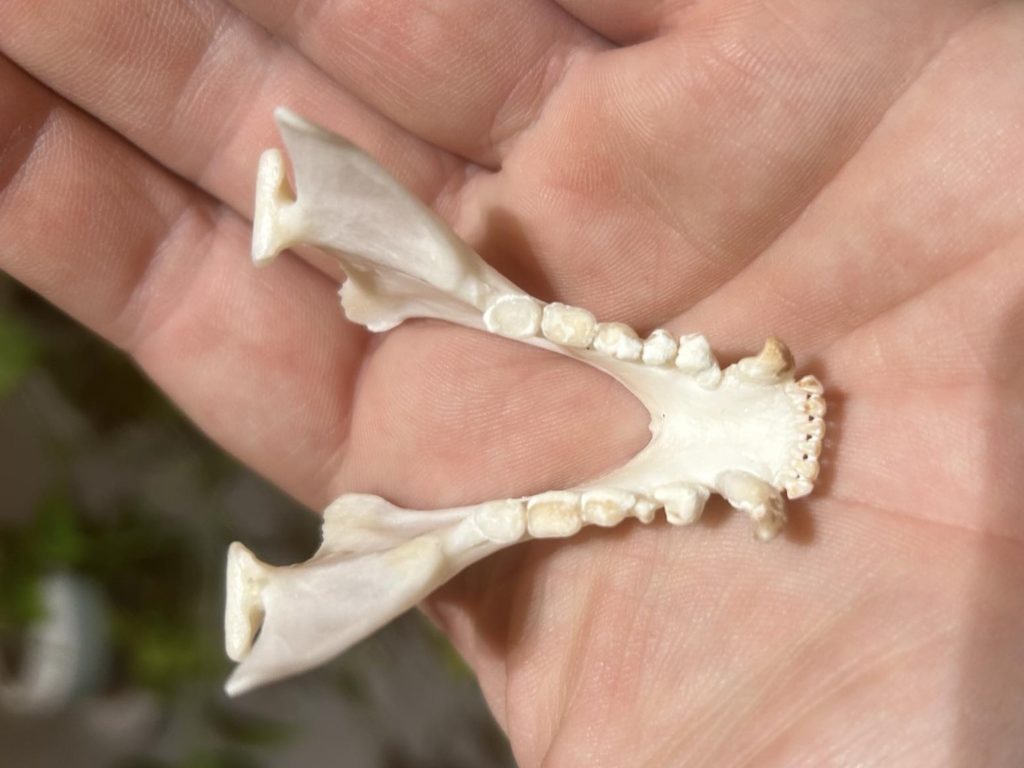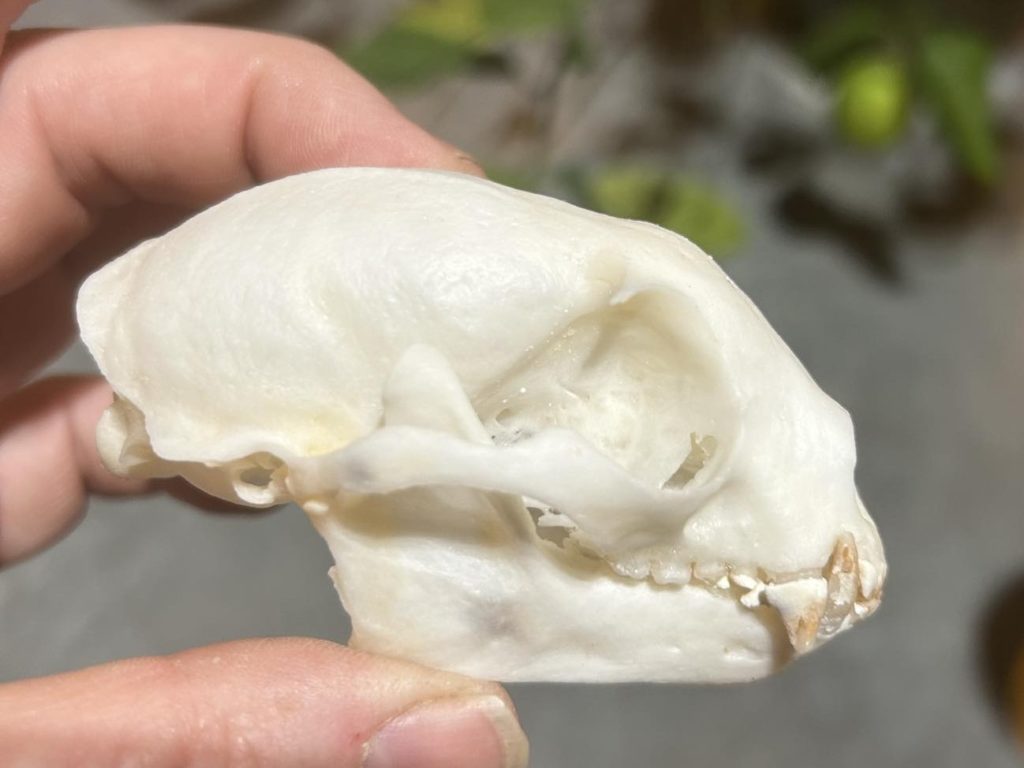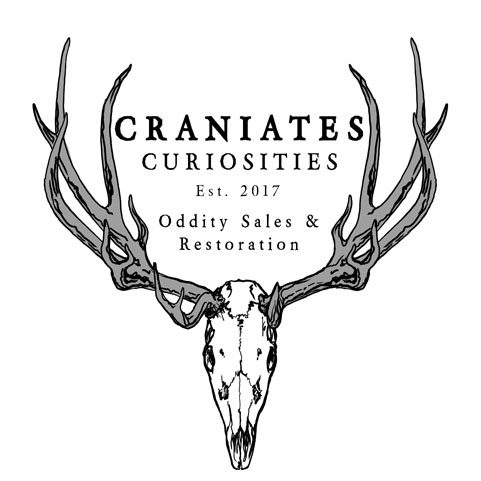Kinkajou Skull #00853






This is the skull of a kinkajou!
The kinkajou is an unusual procyonid native to Central and South America. With its long, prehensile tail, arboreal lifestyle, and frugivorous diet, it resembles a monkey or lemur more than a raccoon. This species is relatively uncommon in collections.
This is an excellent adult example of the species that died naturally in captivity. It is in great condition. It was beetle-cleaned, degreased, and whitened with hydrogen peroxide. Please review all pictures and description for condition.
This specimen is not from an ESA-listed species and is legal to sell and possess. US sales only, sorry!
SOLD!


